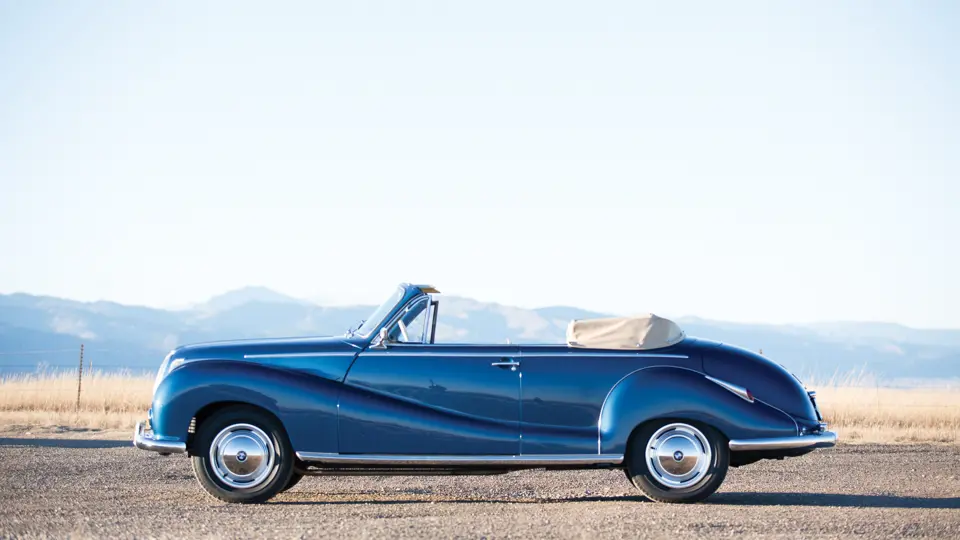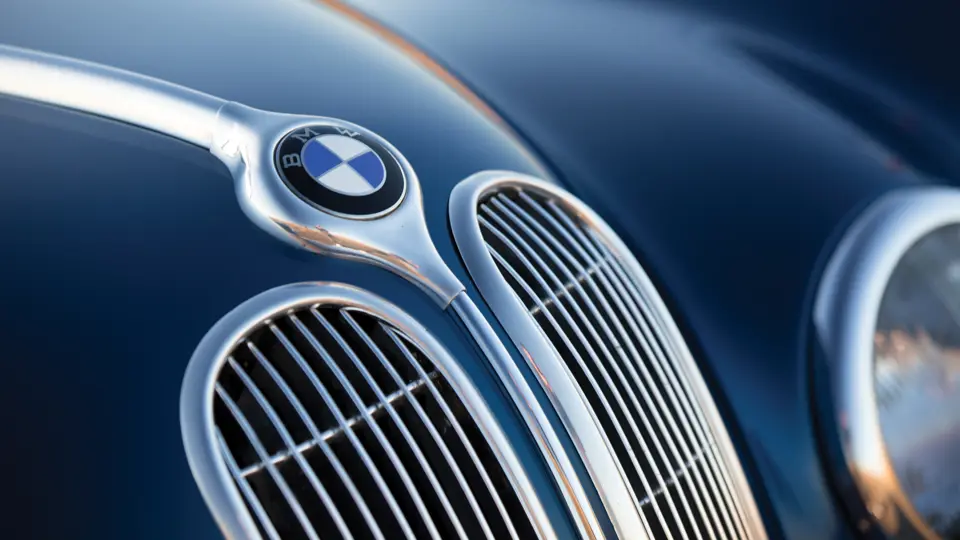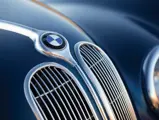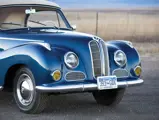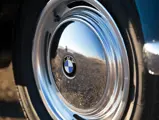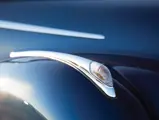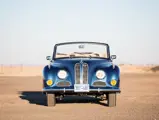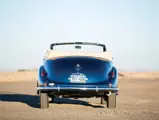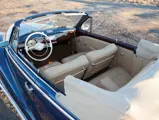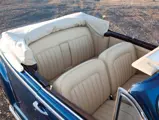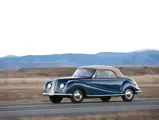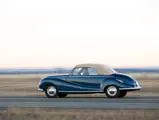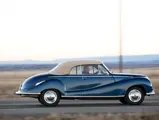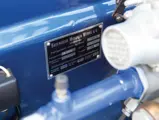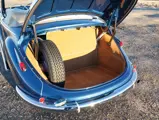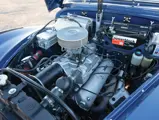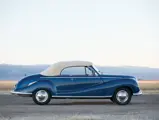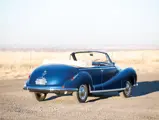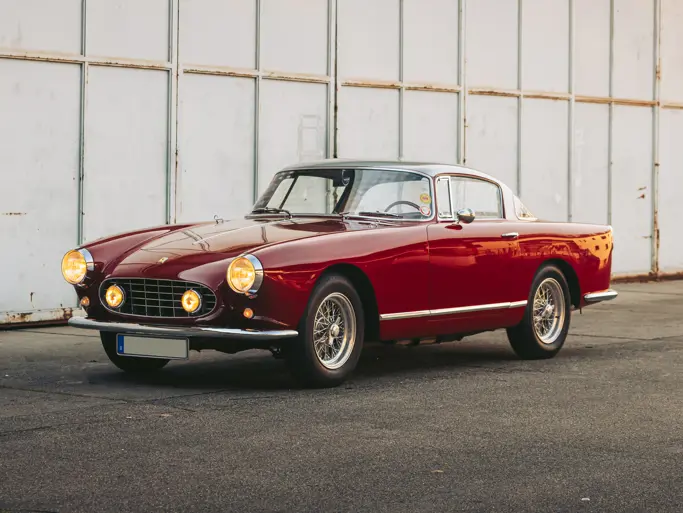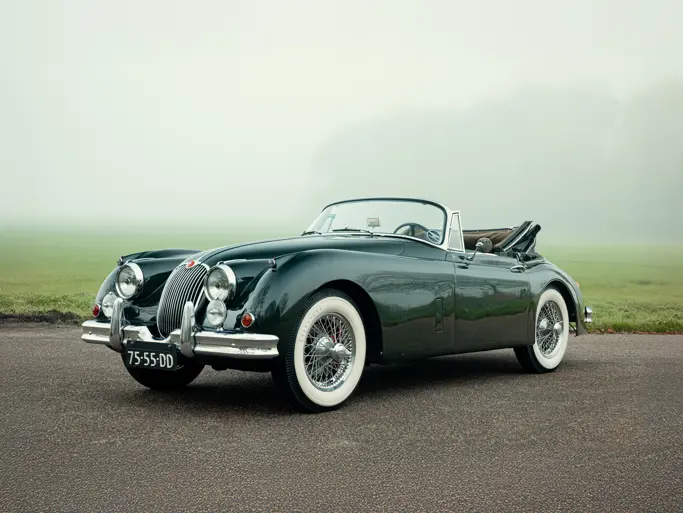120 hp, 3,168 cc all-alloy 90-degree V-8 engine with a single Zenith twin-downdraft carburetor, four-speed manual transmission, double-wishbone front suspension with torsion bars, live axle rear suspension with torsion bars, and front disc and rear drum brakes. Wheelbase: 111.6 in.
BMW aficionados will recognize the 502 as a special model in the famed German marque’s pantheon. It had been derived from the 501 saloon—the first automobile manufactured and sold by BMW after World War II—and was a significant step in the evolution of BMW’s reputation for luxury and performance.
The 501 was introduced in April 1951 at the Frankfurt Motor Show and was heralded as BMW’s emphatic return to motoring. It made an immediate impression, with its solid engineering and luxurious appointments, and as it was priced at over 15,000 DM (approximately four times the average salary in Germany at the time), it was very much an elite automobile. Peter Szymanowski, one-time head of BMW design, was credited with the car’s styling. Although post-war styling was exploring new terrain (BMW even considered a Pininfarina design), Szymanowski preserved traditional BMW cues, including the double-kidney grille and flared fenders. The 501, as well as the 502, was nicknamed the “Baroque Angel,” for its flowing, curvaceous looks.
The 501 featured an all-new platform, double A-arm front suspension, and a rear live axle with front and rear torsion bar springs. It was powered by a straight-six OHV engine that had been matched to a four-speed manual gearbox. However, with its heavy steel body, performance was an issue. Then came the 502.
The 502 was introduced in 1954, making it post-war Germany’s first V-8-powered car, as it had a 2.6-liter engine with an aluminum alloy block that was capable of churning out 100 horsepower. It was said to be Germany’s fastest production sedan, with an open-road speed of 100 mph, and it could easily outpace Mercedes-Benz competitors. Beyond improved performance, the 502 distinguished itself with elegant interior fittings and an exterior ornamented with additional chrome trim. Standard features on the car included fog lamps and individual front seats. The 502 was available in saloon, coupe, and two-door and four-door cabriolet versions. It took style and power to a higher level, foreshadowing contemporary BMW attributes.
BMW entrusted Baur, a respected Stuttgart coachbuilder, to produce the cabriolet and coupe bodies, as BMW production facilities had been compromised by the war. Baur had been building BMW convertibles since the 1930s and was well acquainted with BMW’s high standards. From the time the 502 Cabriolet was introduced for 1956, 57 two-door cabriolets were produced by Baur. The cars were sold through the BMW dealer network and built to order. Buyers had to be affluent, as the list price was DM 21,900, as well as patient, since delivery could take upwards of six months. The combination of price and patience made ownership of a 502 an exclusive investment.
The rare BMW 502 Baur Two-Door Cabriolet offered here is one of only two such cars known to be in the United States. It has been completely restored and stands in remarkable condition. This car was manufactured on June 2, 1956, and delivered to the firm of Siemens & Halske, AG, in Munich for executive use. While no records are available to account for the car’s migration to Canada, it is known that it was last registered in 1973 by Dr. Franklin Lam, an Ottawa dentist. The 502 sat quietly until 2010, when Dr. Lam elected to have the idle vehicle towed away. Tow truck driver Michael Higgins bought the car with the intention of restoring it. Mr. Higgins soon recognized the enormity of the undertaking and chose to sell the car. On June 6, 2011, the current owners acquired this 502.
The new owners immediately shipped the 502 back to Europe for restoration by two extremely experienced and well-respected BMW experts, Erwin Brummer, of Brummer Repair (valley near Munich), for the mechanical and electrical aspects of the car, and the Matejcek firm in Pilsen, Czech Republic, for the body work, convertible top, upholstery, carpeting, and interior accents.
The current owners made regular trips abroad during the two-year restoration to review the work. On one of those early journeys, they met with staff at the Archives Department of BMW Group Classic, the chief resource and authority of all things BMW. Since the car required an entire refinish and the owners had no desire to replicate the 502’s unexceptional original Cortina Grey exterior and blue leather interior, they wanted to know which colors were offered during the car’s production run to make sure the 502 would be finished in true BMW period tones. They learned that since the cars were built to order, there was no standard list of colors. Purchasers could request any color they wanted, and the current owners found that any color would meet authenticity criteria. To ensure the 502’s adherence to BMW standards, they stayed with the BMW color spectrum and chose a radiant Topaz Blue metallic finish (code 364) and a sophisticated beige leather interior.
The owners took delivery of the refurbished 502 on May 2, 2013. They report that it has been fully restored, with all components operative. The work met BMW Group Classic requirements, as evidenced by its accompanying Certificate of Authenticity. Since the car’s restoration, the owners have been focused on confirming its reliability. The 502 has competed in several events that have been sponsored by the BMW Vintage & Classic Car Club of America, such as a 1,000-mile tour in northern Germany in September 2013 and a 1,000-mile road rally through the Colorado Rockies. The 502 has also been entered in several concours d ’elegance events, where it has won Best in Class and Peoples’ Choice awards.
The car is outfitted with Michelin radial tires, and the manual top is fully lined. The owners also made critical upgrades: the original 2.6-liter engine (number 11849) was replaced with a more powerful 3.2-liter V-8 engine and the front drum brakes were exchanged for power-assisted disc brakes for safety. Both changes conform to specifications for later-model 502 Cabriolets. The original engine has been retained, but it is not restored. It is available, should the new owner request it. An owner’s manual, tool kit, jack, and spare tire accompany the car.
This is an uncommon 502 that is ready to be enjoyed by an individual who is able to appreciate the elegance of a vintage BMW.




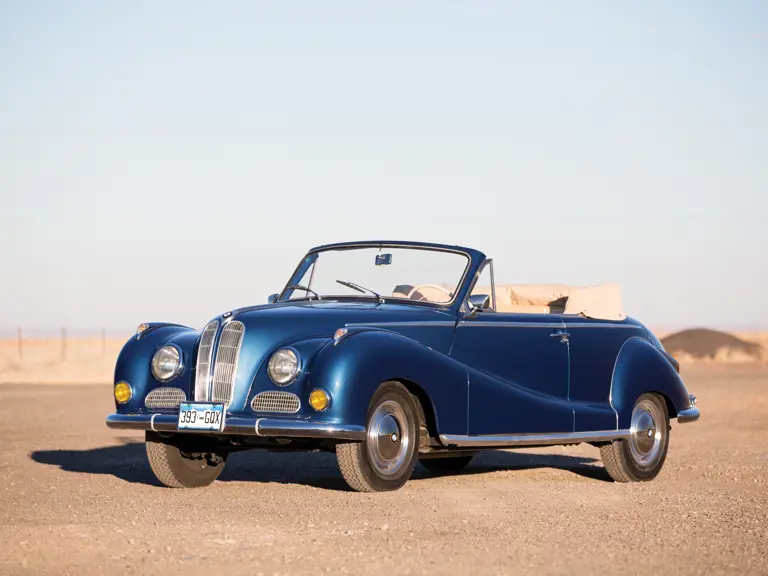
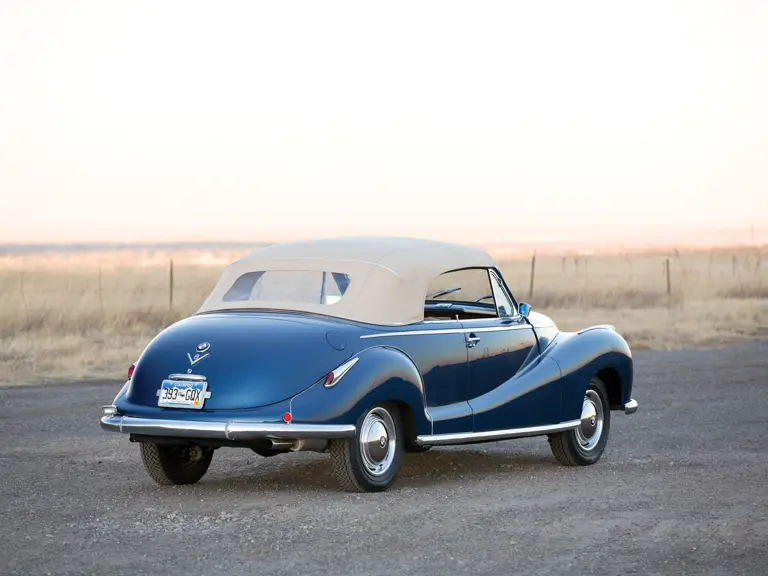
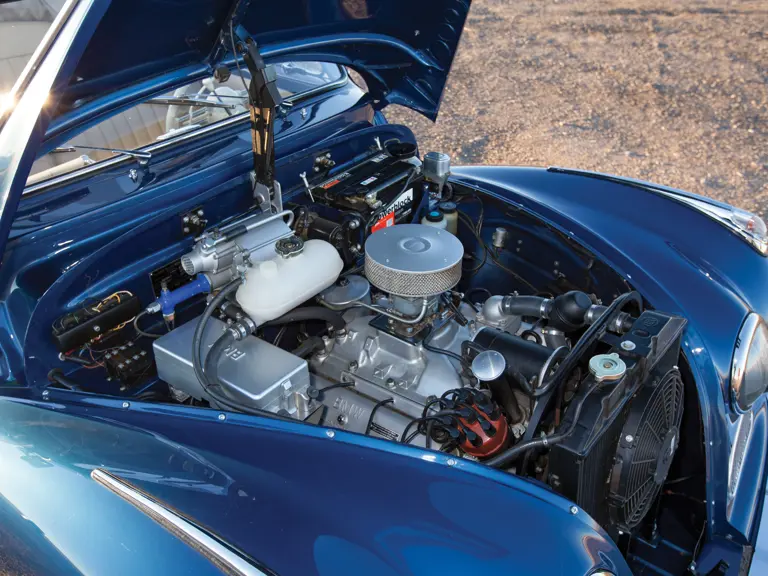
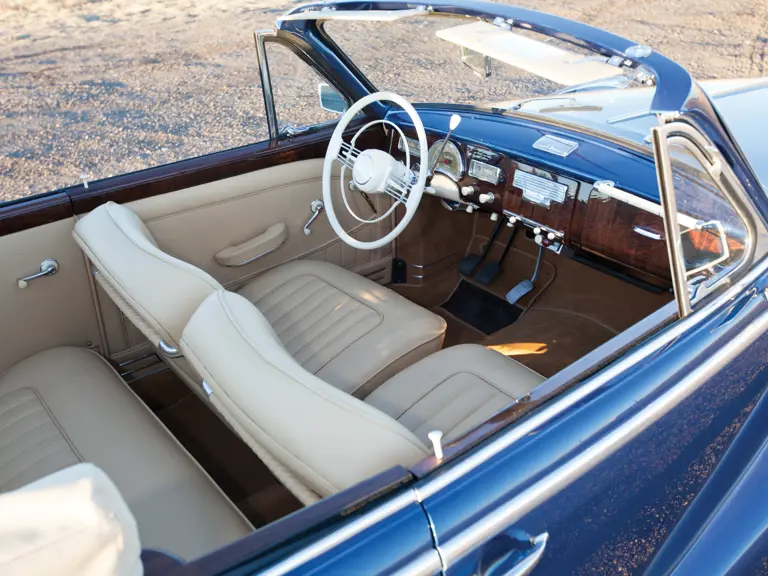
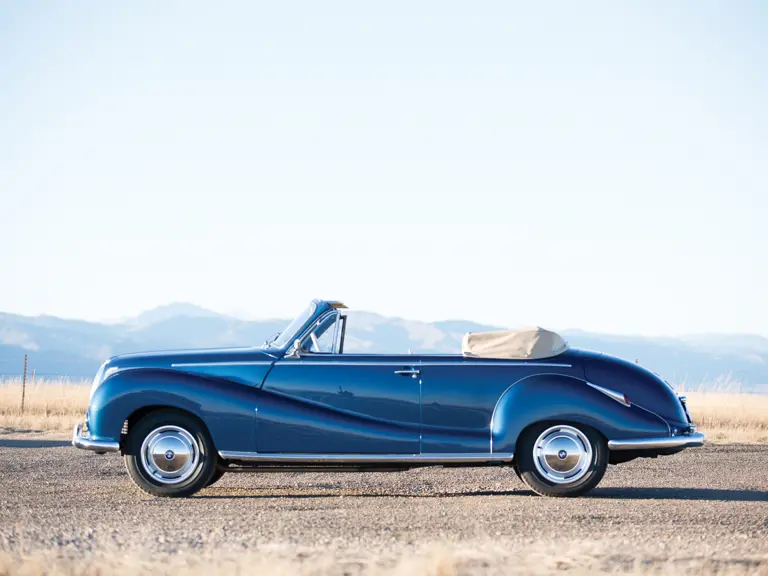
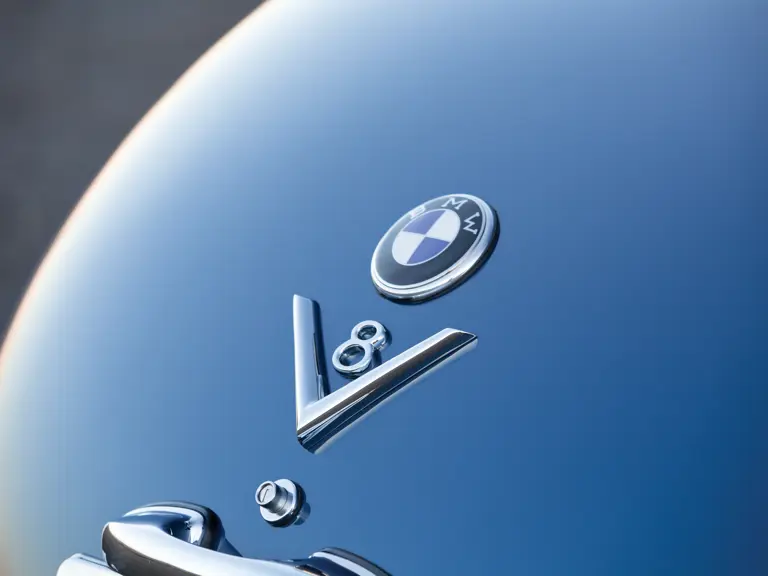
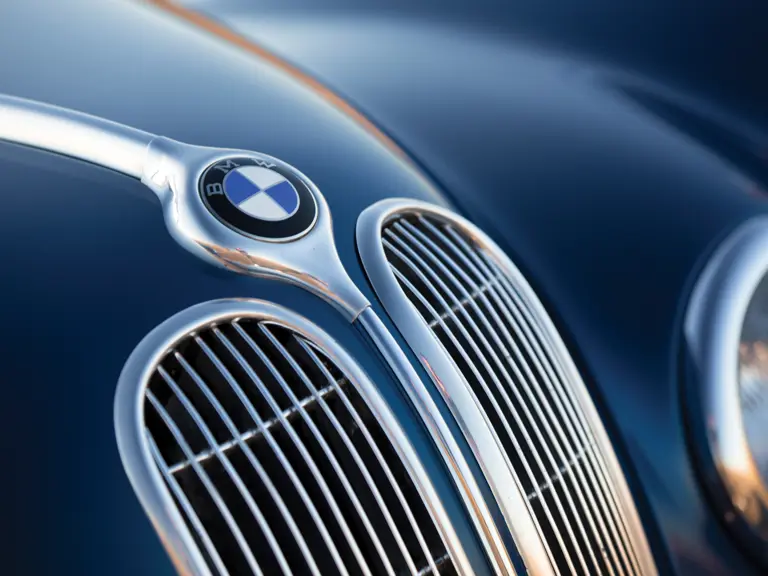
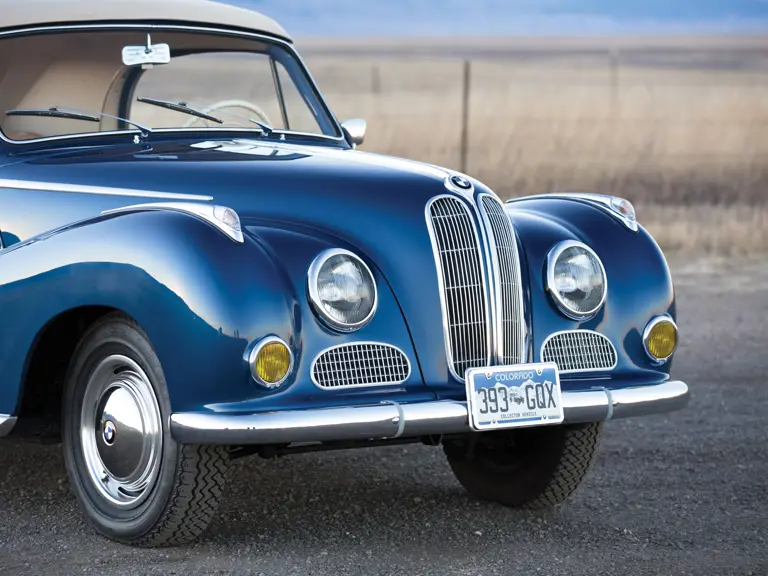
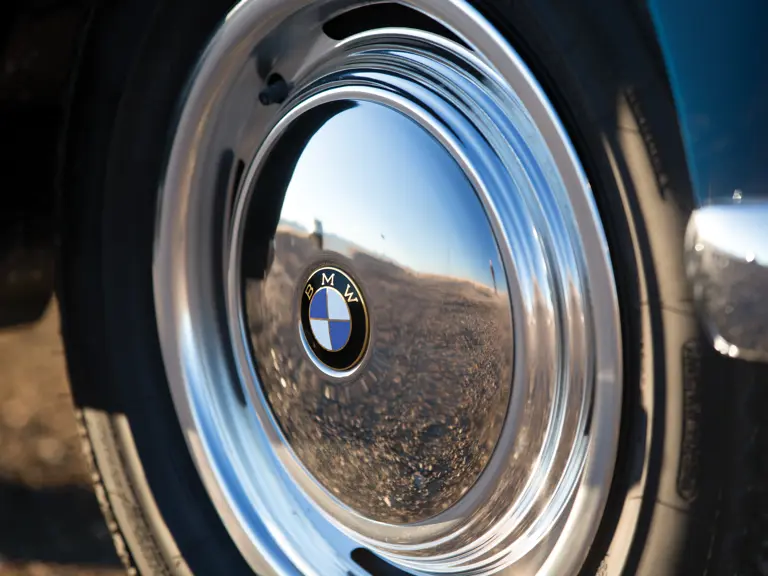
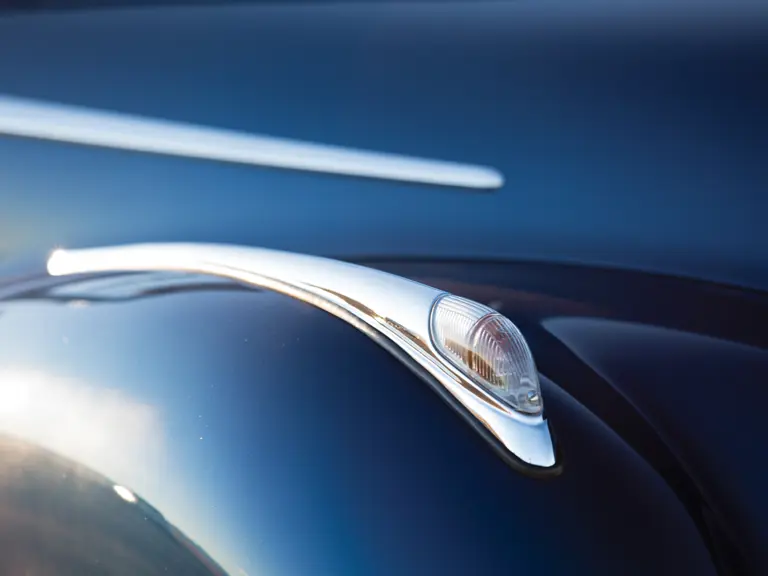

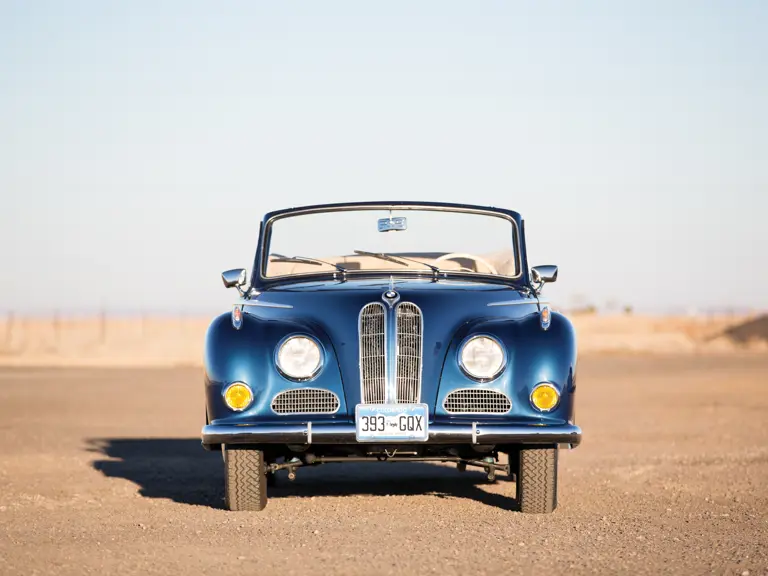
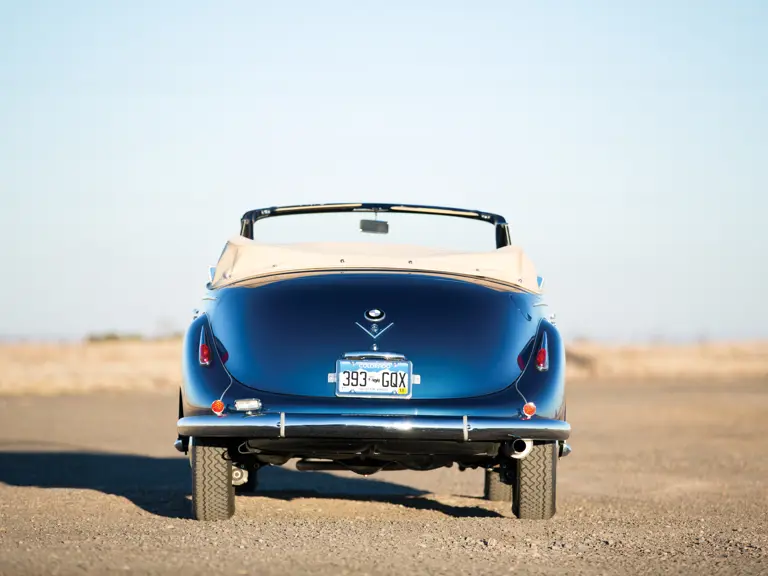
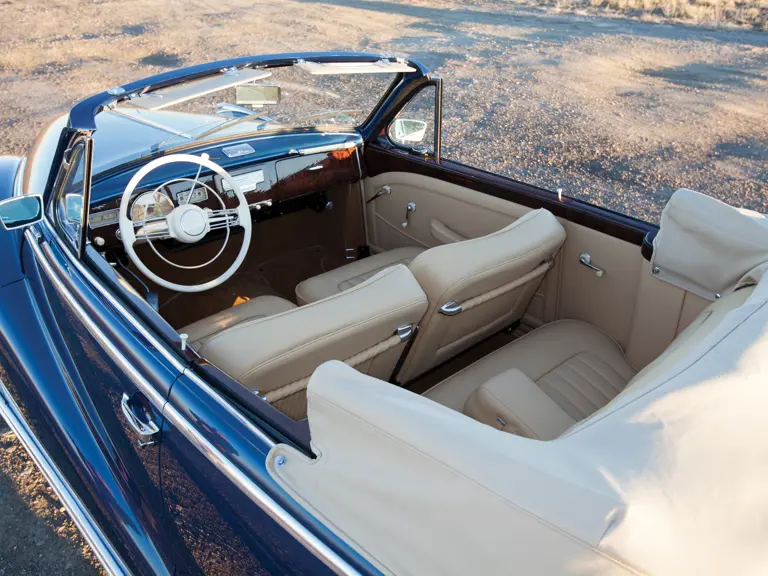
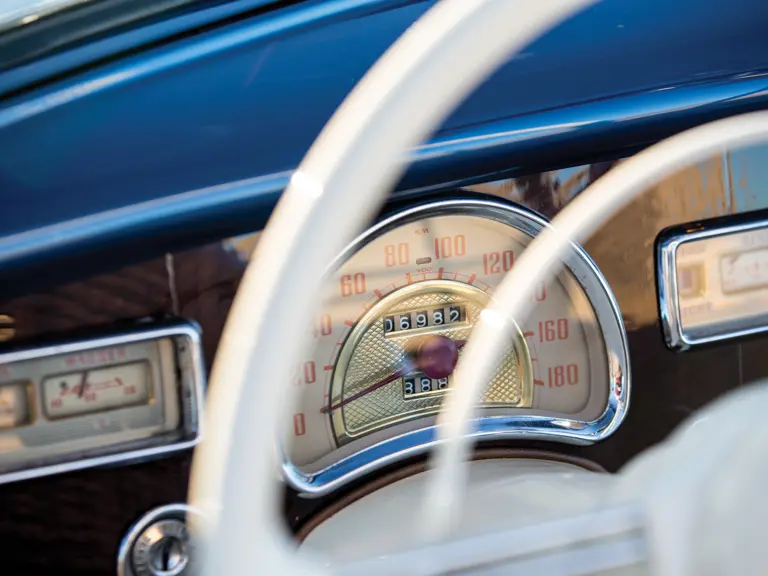
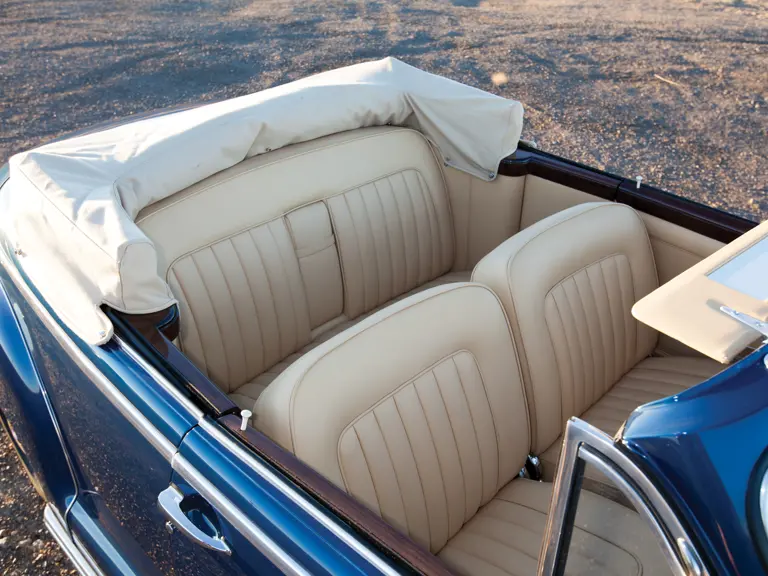
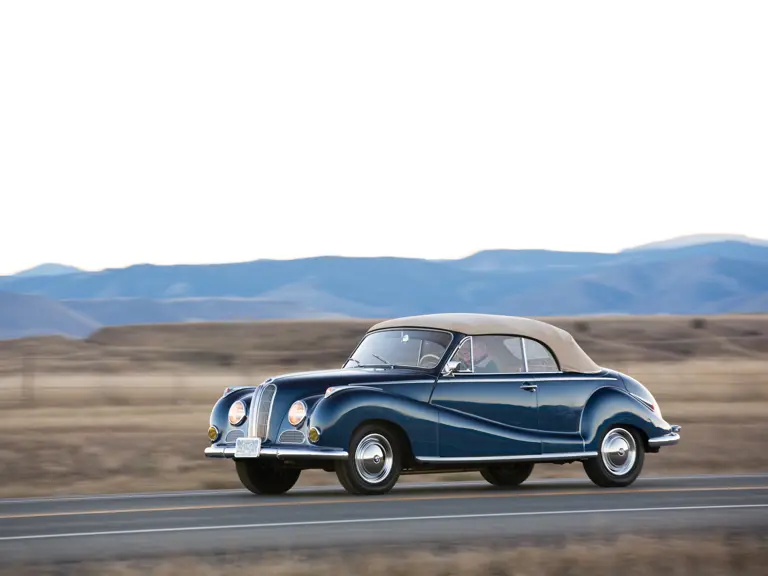
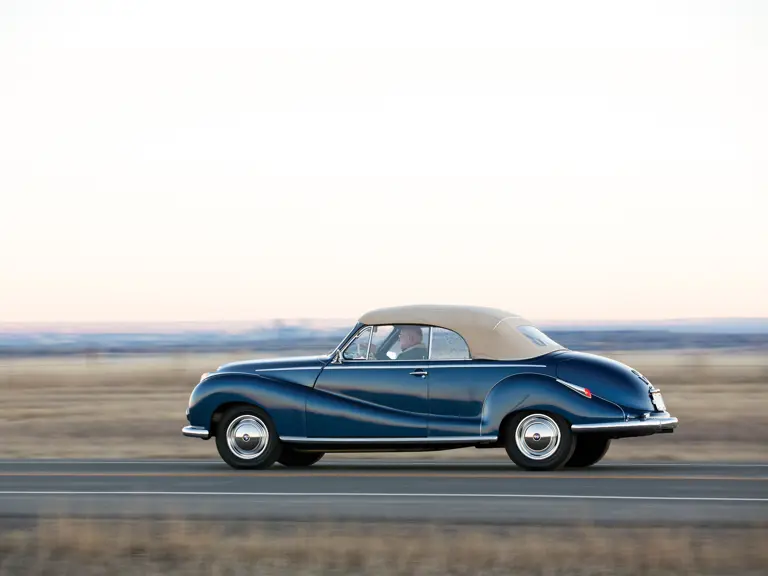
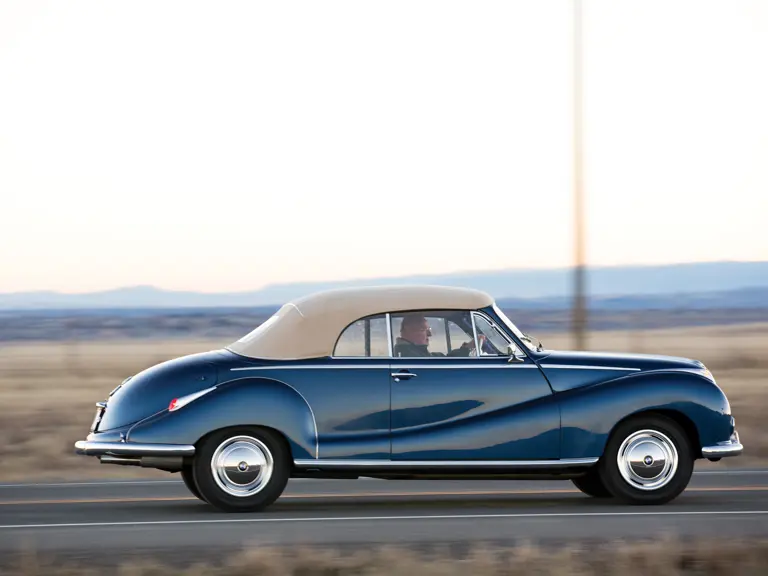
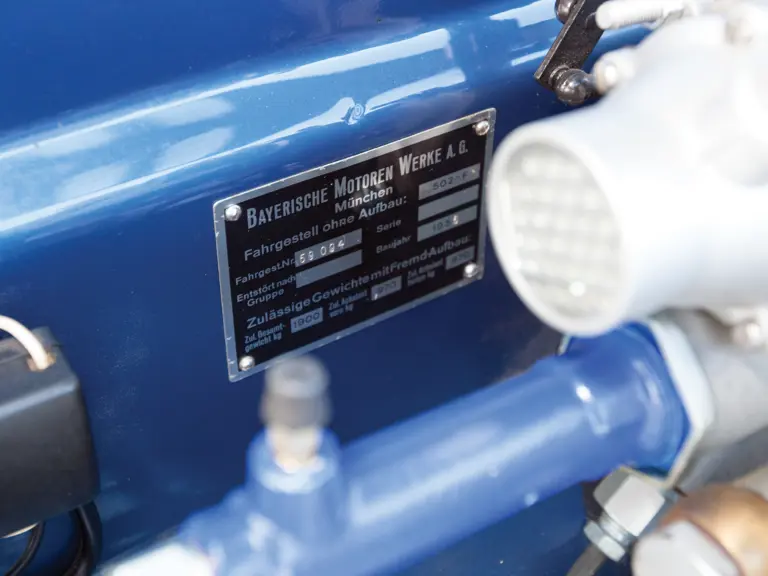



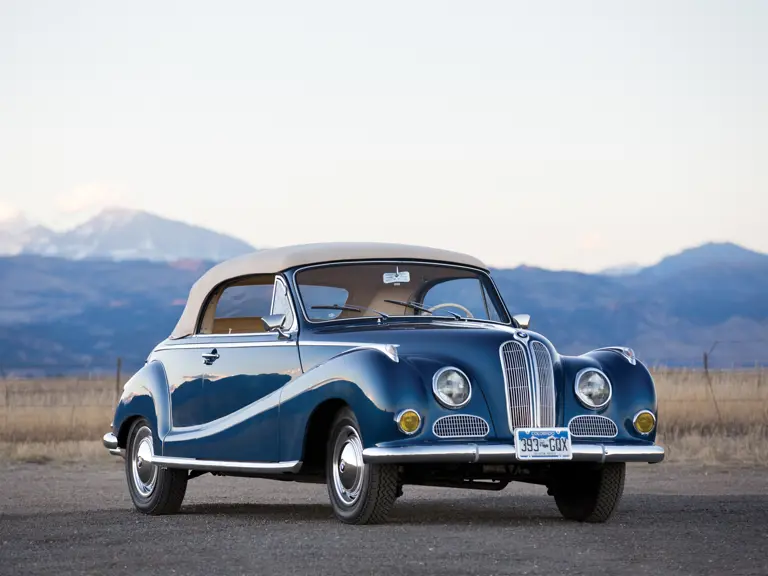
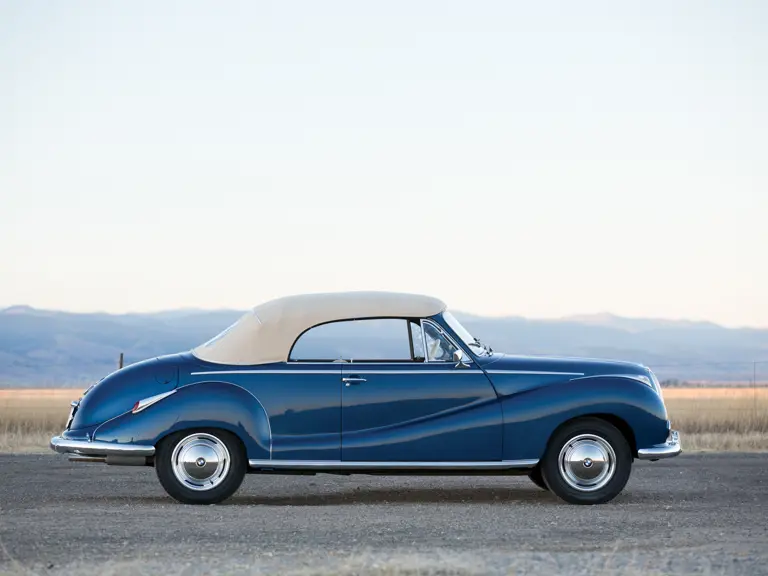
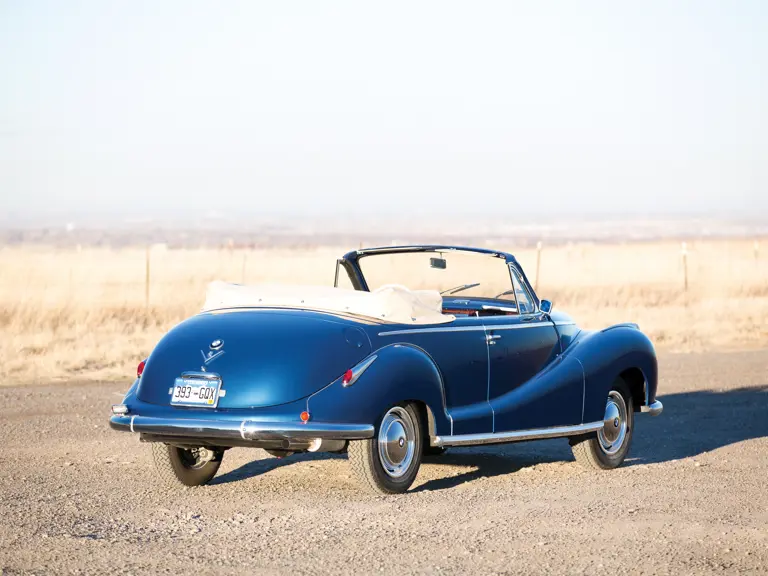
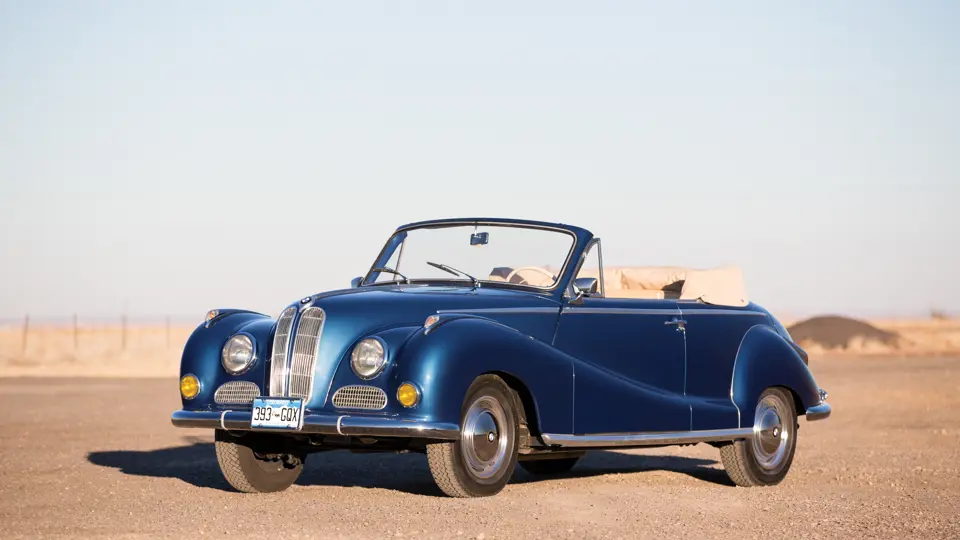
 | Amelia Island, Florida
| Amelia Island, Florida
